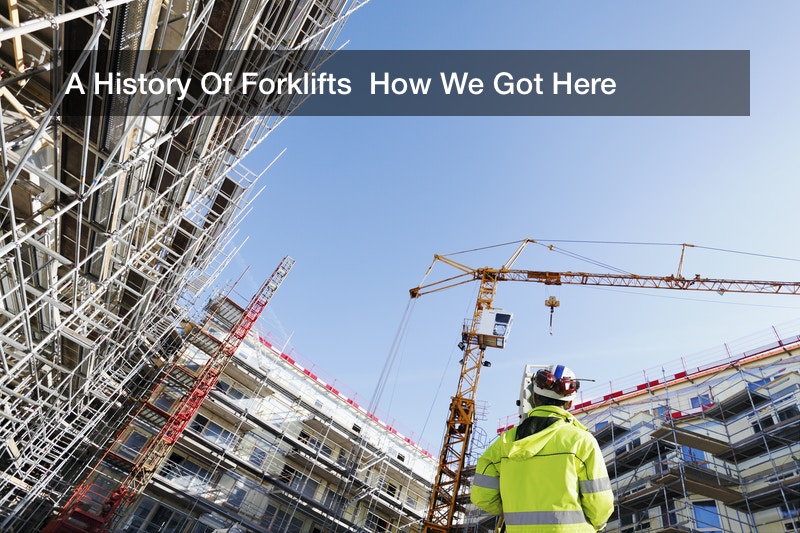

The chances are likely that if you’ve ever been around construction of any kind, or for that matter have worked in an industrial profession, you’ve seen a forklift. They’re hardly impressive to us today, and are run of the mill, much like a cherry picker would be. We approach forklifts so casually that many attempt to operate them in the workplace without proper training — which is why forklifts are so often linked to workplace injuries. They shouldn’t be feared; when operated by a properly trained equipment specialist — forklift operators in particular are meant to be trained and authorized, which is a process that requires a renewal every three years — forklifts are extremely useful, and actually quite impressive. It can accomplish far more than a simple worker, or even several employees working together. But how did we get to this point, with forklift trucks being as ubiquitous as they are? Let’s look into the history of the forklift.
Why Did We Need Forklifts?
As the industrial age went underway, there was a stronger need for mass construction than ever before. Many buildings needed to be made at a fast-paced rate, and the fact is that human beings simply weren’t physically capable of handling the task. In fact, before forklifts existed, manually powered hoists were used to lift large, heavy loads. But even that had its limited, and the equipment specialists of that time were not able to keep up with the demands made by industrialization. Another issue that came up during this time was the danger involved with manually moving heavy weights. Workers were often injured and sometimes even killed. Unfortunately, this was often overlooked at first. However, as there became a greater concern for the safety and rights of employees, people began to look for other options.
How Did The Forklift Come Into Existence?
The Pennsylvania Railroad was actually the first entity to introduce battery powered platform trucks, which were used to move luggage at their train station. This was all the way back in 1906! As World War I began, there became more of a need for machines like this, especially since the homefront now lacked the labor it relied upon. About a decade after the invention of the first battery powered truck, various factories began using similar trucks and lifts, and equipment specialists began training to become experts in these types of products. As was the case with World War I, World War II pushed forward the need for more trucks. With factories and companies in general relying upon warehouses, it became necessary for forklifts to be more easily maneuverable, which led to alterations in the machines.
What Led To Changes In How We Use Forklifts?
Although the early twentieth century saw some concern for the safety of employees, latter half of the century is when real change began. As lifting heights and capacities increased — in 1989, a forklift set a world record by lifting 90 tons — there was a growing concern about the potential injuries caused by forklifts. They still aren’t completely safe, as injuries by forklifts still cause 10% of all injuries that occur in factories and warehouses, but the working conditions surrounding these machines have greatly improved. For that matter, the 1980s saw a change in the ergonomic design of forklifts, specially meant to increase not only the safety of equipment specialists, but their comfort. Finally, exhaust and the environmental impacts of forklifts became a priority, and forklift manufacturers became held accountable for the exhaust emissions of their machines.
Forklifts are not entirely perfected, and progress can always be made. However, there is a major difference between the forklifts we use today and the machines we started with. These improvements have led to safer, more sustainable machines. Most importantly, they now prioritize the safety and comfort of equipment specialists, who work hard to operate these specialized pieces of equipment. Though forklifts are valuable, they would be nothing without those specialists!






